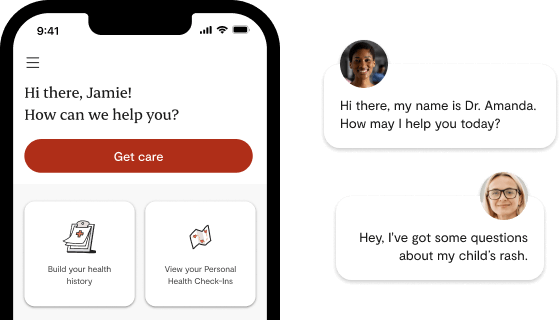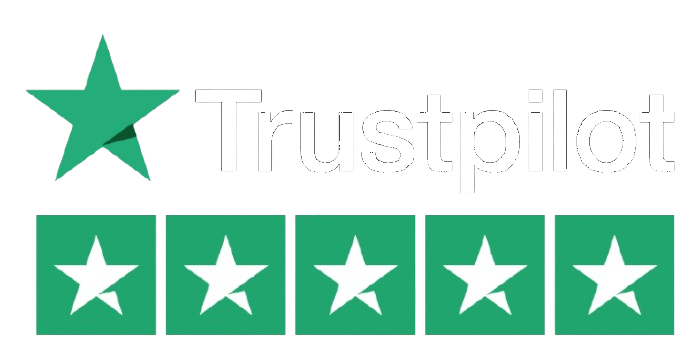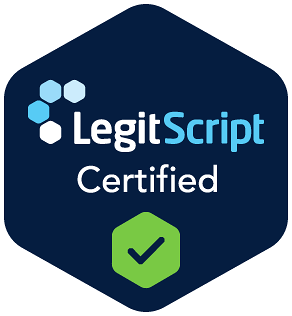Ontario’s healthcare landscape has undergone a dramatic transformation with the rise of virtual care platforms, offering unprecedented convenience and accessibility to medical services. With over 2.3 million Ontarians currently without a family doctor and lengthy wait times for specialist consultations, online doctor services have become essential for maintaining health and wellness.
The Current State of Virtual Healthcare in Ontario
Virtual care has evolved from a pandemic necessity to a permanent fixture in Ontario’s healthcare system. The province now covers many virtual consultations through OHIP, making quality healthcare more accessible than ever before. Recent data shows that virtual visits accounted for 71.1% of all primary care visits during the early pandemic months, demonstrating the rapid adoption and acceptance of this care model.
Key benefits driving adoption include:
-
Immediate access: Same-day appointments often available within minutes
-
Convenience: No travel time, parking fees, or waiting rooms
-
Safety: Reduced exposure to infections in clinical settings
-
Cost-effectiveness: OHIP coverage for medically necessary services
-
Accessibility: Particularly valuable for rural, mobility-limited, and immunocompromised patients
Understanding Your Virtual Care Options
Ontario residents have access to numerous virtual healthcare platforms, each with distinct features, pricing models, and service offerings. Understanding these differences is crucial for selecting the most appropriate option for your healthcare needs.
OHIP Coverage and Virtual Care
The Ontario government has established permanent billing codes for virtual care services, ensuring that medically necessary consultations are covered under OHIP. This includes video visits, telephone consultations, and secure messaging for appropriate medical conditions. However, not all platforms operate under OHIP coverage, making it essential to understand the financial implications of your choice.
Platform Categories
Virtual care platforms in Ontario generally fall into three categories:
OHIP-Integrated Platforms: These work directly with provincial health insurance, providing free consultations for covered services. Examples include platforms that have established partnerships with Ontario Health and comply with provincial billing requirements.
Hybrid Models: These offer both OHIP-covered services and premium features through optional memberships or additional fees. This approach provides flexibility while maintaining accessibility.
Private Pay Platforms: These operate independently of provincial health insurance, requiring direct payment from patients. While often more expensive, they may offer expanded services or shorter wait times.
Comprehensive Platform Analysis
Leading Virtual Care Platform: Ogaei Care (Ogaei.ca)
Ogaei Care represents a new generation of virtual healthcare specifically designed for Ontario residents. Launched in 2024, this platform focuses exclusively on serving Ontario patients with OHIP-covered virtual consultations and streamlined access to specialists.
Core Strengths:
-
Complete OHIP Integration: Family doctor consultations are fully covered for Ontario residents with valid health cards
-
Rapid Access: Most patients connect with physicians within 10-20 minutes
-
Specialist Connections: Direct pathways to dermatologists, pediatricians, psychiatrists, and other specialists, often within 48 hours for members
-
Transparent Pricing: Optional membership at $9.99/month (currently $4.99 for first three months) provides additional benefits without eliminating free OHIP services
-
Family Medicine Integration: Offers pathways for patients to establish ongoing relationships with family physicians
Service Range: The platform handles common conditions including cold and flu symptoms, UTI treatment, prescription renewals, mental health consultations, women’s health, pediatric care, and chronic condition management.
Unique Features:
-
Same-day OHIP-covered appointments
-
Integrated prescription delivery to local pharmacies
-
Free sick notes and lab requisitions for members
-
Bilingual services available
-
Mobile-optimized platform for convenient access
Alternative Platform Options
Comprehensive National Platform
One major platform operates across Canada with 24/7 availability and extensive provider networks. This service offers immediate access to over 2,000 healthcare providers across 25+ specialties. However, it operates on a private-pay model with consultations starting around $210 for general practitioners and $160+ for specialists. Monthly membership options are available at approximately $80, including unlimited GP visits and specialist credits.
Provincial Coverage Platform
Another significant platform provides free services to residents of Ontario, British Columbia, and Alberta through provincial health plan coverage. This service emphasizes continuity of care, allowing patients to select and maintain relationships with specific providers. The platform offers video, phone, and text consultations, making it accessible to users with varying technology capabilities.
Telecommunications-Backed Service
A major telecommunications company operates a virtual care platform offering OHIP-covered doctor visits alongside mental health counseling and dietitian services. This platform provides free doctor consultations for Ontario residents while charging for specialized services like psychology ($225 for initial visits) and nutrition counseling ($120 per session).
Text-Based Consultation Service
One platform has adapted to Ontario’s changing virtual care landscape by offering primarily text-based consultations. For Ontario residents, specialist visits remain OHIP-covered, while primary care visits require payment of $55-65 per consultation. The platform offers subscription packages to reduce per-visit costs.
Key Considerations for Choosing Your Platform
Clinical Appropriateness
Virtual care excels for 80-85% of healthcare concerns but has limitations. Appropriate conditions include:
-
Minor acute illnesses (cold, flu, UTI)
-
Chronic condition management
-
Prescription renewals and adjustments
-
Mental health consultations
-
Routine follow-up appointments
-
Preventive care discussions
Virtual care is not suitable for:
-
Medical emergencies requiring immediate intervention
-
Conditions requiring physical examination or procedures
-
Complex diagnostic workups
-
Situations requiring immediate imaging or laboratory tests
Technology Requirements and Accessibility
Successful virtual care requires reliable internet connectivity and appropriate devices. While 99.5% of Ontario households have access to adequate broadband speeds, digital literacy and comfort with technology vary significantly. Platforms offering multiple communication methods (video, phone, text) provide greater accessibility across diverse populations.
Digital equity considerations include:
-
Language barriers and need for translation services
-
Varying comfort levels with technology across age groups
-
Internet connectivity challenges in rural and Northern Ontario
-
Device availability and technical support needs
Privacy and Security Standards
Virtual care platforms must comply with Ontario’s Personal Health Information Protection Act (PHIPA) and maintain robust security measures. Essential security features include:
-
End-to-end encryption for all communications
-
Secure data storage within Canada
-
Compliance with provincial privacy regulations
-
Clear consent processes for data collection and use
-
Incident response protocols for potential breaches
The Information and Privacy Commissioner of Ontario has established comprehensive guidelines requiring platforms to conduct privacy impact assessments, implement security management frameworks, and provide ongoing staff training.
Integration with Healthcare System
The most effective virtual care platforms integrate seamlessly with Ontario’s broader healthcare system. This includes:
-
Electronic prescription capabilities connected to local pharmacies
-
Laboratory requisition systems
-
Specialist referral networks
-
Integration with existing electronic health records
-
Coordination with in-person care providers
Cost Analysis and Value Considerations
OHIP-Covered Services
Virtual consultations for medically necessary care are covered under OHIP when provided by Ontario-licensed physicians through approved platforms. This includes:
-
Assessment and diagnosis of acute conditions
-
Management of chronic diseases
-
Prescription renewals for ongoing medications
-
Mental health consultations
-
Routine follow-up appointments
Additional Service Costs
Many platforms offer enhanced services beyond OHIP coverage:
-
Administrative services: Sick notes, employment forms, travel clearances
-
Expedited access: Guaranteed appointment times or reduced wait periods
-
Specialized consultations: Nutritionists, naturopaths, counselors
-
Premium support: Extended consultation times or after-hours availability
Membership Models
Several platforms offer optional membership programs providing additional value:
-
Ogaei Care: $9.99/month for unlimited visits, free sick notes, and faster specialist access
-
Alternative platforms: Range from $50-80/month for comprehensive service packages
The Booking Process: Step-by-Step Guide
Step 1: Platform Selection and Registration
Choose a platform based on your needs, coverage preferences, and service requirements. Registration typically requires:
-
Valid Ontario health card (for OHIP coverage)
-
Personal identification and contact information
-
Emergency contact details
-
Basic medical history information
Step 2: Account Setup and Verification
Complete your profile with:
-
Current medications and allergies
-
Relevant medical history
-
Preferred pharmacy information
-
Communication preferences
Step 3: Appointment Booking
Select from available options:
-
Immediate consultation: For urgent, non-emergency needs
-
Scheduled appointment: For routine care or specific time preferences
-
Follow-up booking: For ongoing condition management
Step 4: Pre-Consultation Preparation
Prepare for your virtual visit by:
-
Testing your internet connection and device camera/microphone
-
Gathering relevant medical information and current medications
-
Preparing questions or concerns to discuss
-
Finding a private, well-lit space for the consultation
Step 5: Consultation and Follow-Up
During your appointment:
-
Provide clear, accurate information about symptoms
-
Ask questions about diagnosis and treatment recommendations
-
Confirm understanding of prescribed treatments
-
Schedule follow-up appointments if necessary
Addressing Common Concerns and Limitations
Quality of Care Considerations
Virtual care maintains high standards when used appropriately. Ontario’s College of Physicians and Surgeons has established clear guidelines ensuring virtual consultations meet the same professional standards as in-person visits. Physicians must use professional judgment to determine when virtual care is appropriate and when in-person examination is necessary.
Continuity of Care
The most effective virtual care platforms facilitate ongoing relationships between patients and providers rather than purely episodic care. This approach improves health outcomes and patient satisfaction while reducing healthcare system fragmentation.
Emergency Situations
Virtual platforms are not appropriate for medical emergencies. Patients experiencing severe symptoms such as chest pain, difficulty breathing, or signs of stroke should immediately call 911 or visit the nearest emergency department.
Rural and Northern Ontario Considerations
Virtual care provides particular value for residents of rural and Northern Ontario, where healthcare access has traditionally been challenging. The Ontario Telemedicine Network has demonstrated higher utilization rates in Northern regions, with rural areas showing 52.0 visits per 1,000 people compared to 3.1 per 1,000 in urban Southern Ontario.
Benefits for rural residents include:
-
Reduced travel time and costs for routine consultations
-
Access to specialist care without lengthy journeys
-
Continuity of care during severe weather or transportation challenges
-
Connection to urban-based specialists and subspecialists
Challenges that persist:
-
Internet connectivity limitations in some remote areas
-
Need for in-person care for complex conditions
-
Limited local support for follow-up care or procedures
Mental Health and Specialized Services
Virtual care has proven particularly effective for mental health services, with 61.8% of Ontario Telemedicine Network usage dedicated to mental health and addictions. Many platforms now offer:
-
Licensed counselors and therapists
-
Psychiatric consultations for medication management
-
Crisis intervention services
-
Ongoing therapy sessions
Specialized services increasingly available include:
-
Nutrition counseling and dietary planning
-
Chronic disease management programs
-
Women’s health consultations
-
Pediatric care for children and adolescents
Future Developments and Trends
Technology Integration
Emerging technologies are enhancing virtual care capabilities:
-
Artificial intelligence: Improving triage and diagnostic support
-
Remote monitoring devices: Enabling better chronic disease management
-
Mobile health applications: Integrating with virtual consultations
-
Blockchain technology: Enhancing security and interoperability
Policy Evolution
Ontario continues refining virtual care regulations and funding models:
-
Permanent integration of virtual care into provincial health planning
-
Enhanced privacy and security requirements
-
Improved integration with existing healthcare infrastructure
-
Expansion of covered services and eligible providers
Access Improvements
Ongoing initiatives focus on addressing equity concerns:
-
Enhanced broadband infrastructure in underserved areas
-
Multilingual service expansion
-
Digital literacy programs for older adults
-
Integration with community health centers
Making Your Decision
When selecting a virtual care platform, consider these key factors:
Clinical Needs: Assess whether your healthcare requirements align with virtual care capabilities and identify any conditions requiring in-person evaluation.
Financial Considerations: Understand OHIP coverage limits and evaluate the value of optional premium services or memberships.
Technology Comfort: Choose platforms offering communication methods matching your technical abilities and preferences.
Integration Requirements: Consider how the platform connects with your existing healthcare providers, pharmacy, and specialist needs.
Long-term Relationship: Evaluate whether you prefer episodic care or ongoing relationships with specific providers.
Frequently Asked Questions
Can I use my OHIP coverage for all virtual care consultations?
Most medically necessary consultations with Ontario-licensed physicians on approved platforms are covered by OHIP. However, premium services—such as specialist psychology sessions, administrative request letters, or expedited appointments—may incur additional fees.
How quickly can I see a doctor through an online platform?
Depending on the service, patients can often access same-day appointments within minutes or schedule visits at their convenience. Platforms like Ogaei Care average 10–20 minutes wait time for non-urgent consultations.
What medical issues are suitable for virtual care?
Virtual care is ideal for minor acute illnesses (cold, flu, urinary tract infections), prescription renewals, chronic condition management, mental health consultations, and routine follow-ups. It is not appropriate for emergencies or conditions requiring physical exams or procedures.
What technology do I need for a virtual doctor visit?
You need a reliable internet connection and a smartphone, tablet, or computer with camera and microphone. Many platforms also support telephone-only consultations and secure messaging for users with limited internet access.
Is virtual care available to rural and Northern Ontario residents?
Yes. Virtual care eliminates travel barriers and provides access to specialists for rural and Northern residents. However, internet connectivity may vary in remote areas, so platforms offering phone consultations are especially valuable.
Final thoughts about the best online doctor options in Ontario
Virtual healthcare in Ontario has matured into a reliable, accessible, and cost-effective complement to traditional medical care. With platforms like Ogaei Care leading innovation in OHIP-integrated services alongside established alternatives offering various features and pricing models, Ontario residents have unprecedented choice in accessing convenient healthcare.
The key to successful virtual care lies in selecting the platform that best matches your individual needs, comfort level, and healthcare goals. As virtual care continues evolving, it promises to play an increasingly central role in maintaining health and wellness for all Ontarians, regardless of location or circumstances.
By understanding the available options, preparation requirements, and appropriate use cases, patients can confidently navigate Ontario’s virtual healthcare landscape and access quality medical care when and where they need it most. The future of healthcare in Ontario is increasingly digital, convenient, and patient-centered, offering new possibilities for maintaining health and managing medical conditions effectively.











